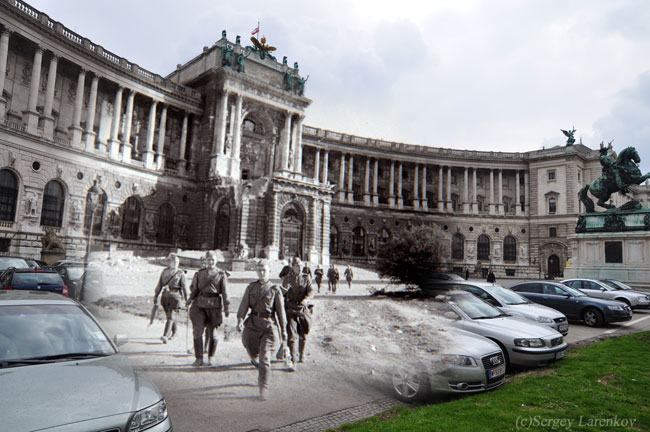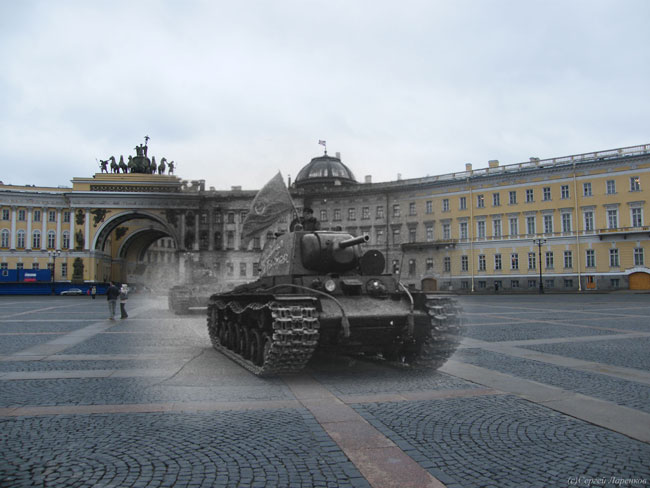

Check out the full set of pictures – HERE
Very interesting idea. Seems like it would be pretty tough to get the perspective perfect unless you could somehow hook your camera up to your computer and have some sort of “live view” and overlay the historical picture with lots of transparency. There must be some programs available to do that… trial and error would just be too tedious.



Comments
7 responses to “Perspective Matching With WWII Photographs In Russia”
Awesome stuff there. My favorite pic is the close up of the steps and columns, it looks like you can see some filled bullet holes in the background.
When I was in St. Petersburg, Russia back in the mid-90s, I noticed there were still shrapnel scars from WWII on the granite columns of at least one building. When I asked about the marks I was told they purposely didn’t repair them as a reminder of the titanic struggle for survival the city endured.
DAL357
Seems I just saw an article on Gizmodo or Lifehacker or something about someone developing a piece of software that would do just that – overlay archive photos on top of live camera viewscreens now.
It was still beta, though.
He might have really done this by trial-and-error… or had a print-out in-hand to get the angles right :).
I’m going to have to find some old photos of the family farm or something and try this. I initially thought that it would be very difficult to get the angles just right, but I guess you can correct perspective in Photoshop (I’ve never used it much), so maybe you just have to get the general point of view.
You don’t need perfect camera setting (although the closer to the original the better), you can warp the photos in a similar way one would create a panorama photo.
I’m not familiar with Photoshop but for a freeware solution, Google for “Hugin”.
wow for freeware that Hugin program you recommended looks amazing!
The first photo on this page is actually a photo of Hero’s square in Vienna, Austria. That is the balcony from which Hitler announced the annexation of Austria to the German Reich in 1938.